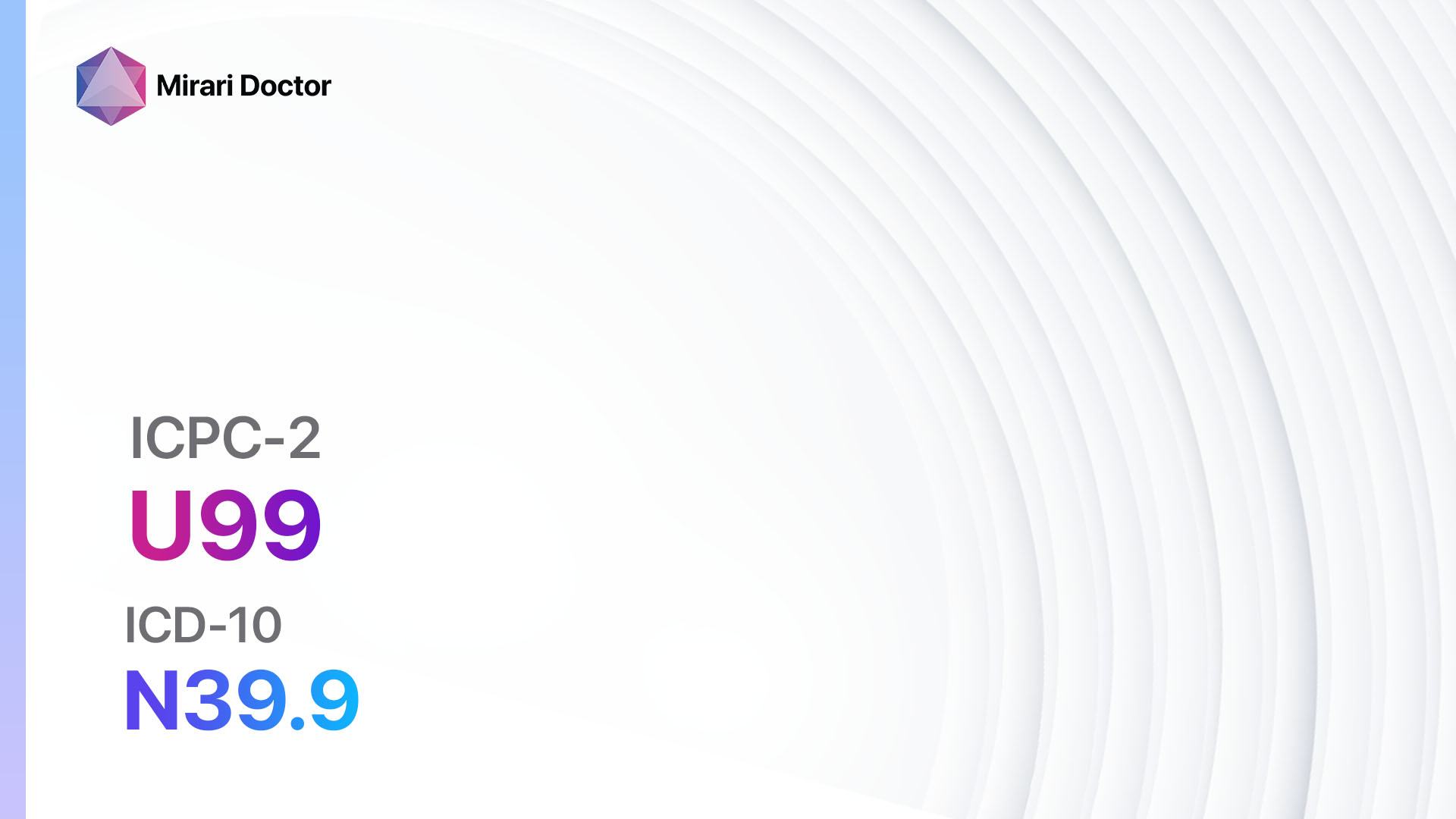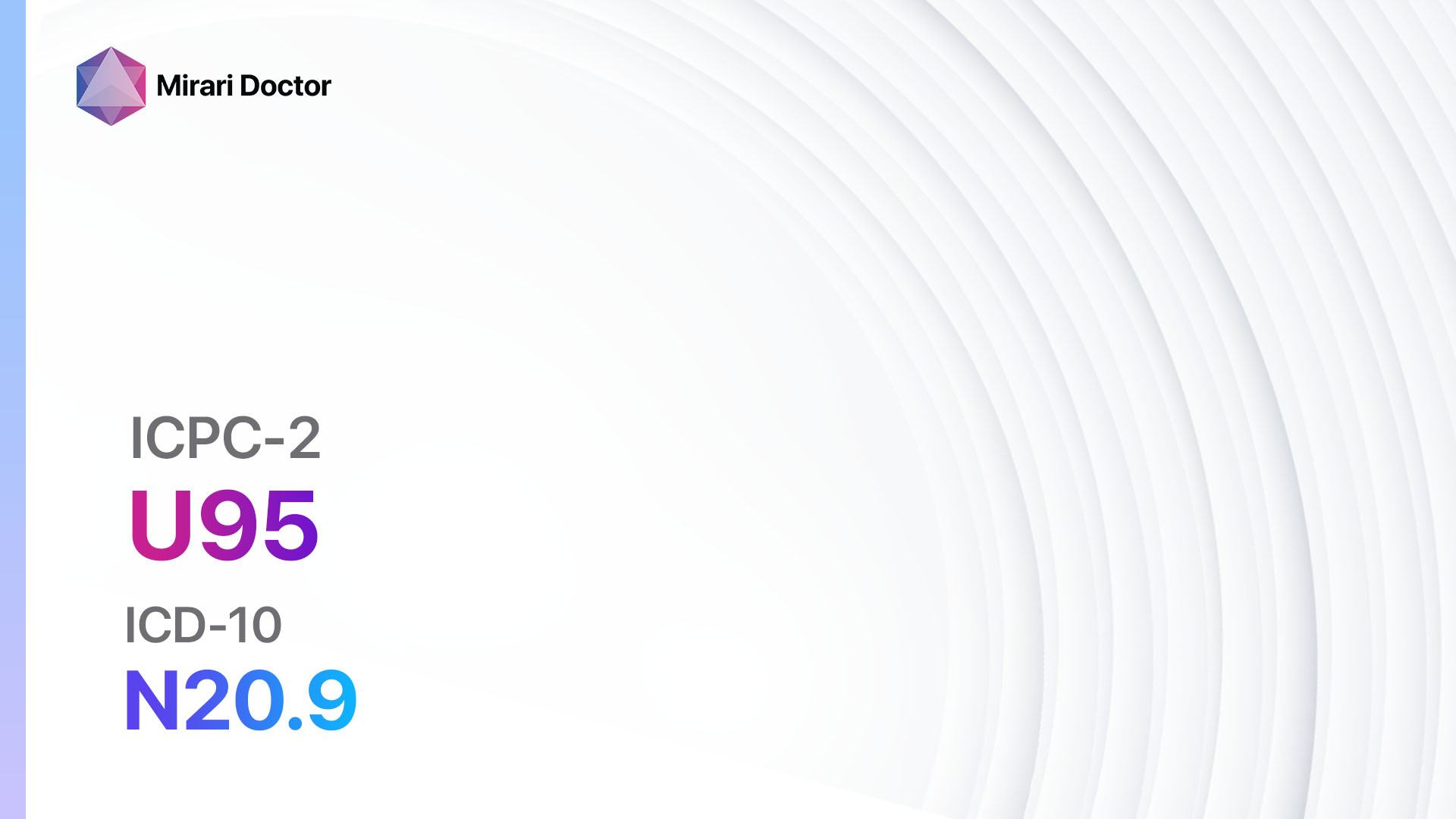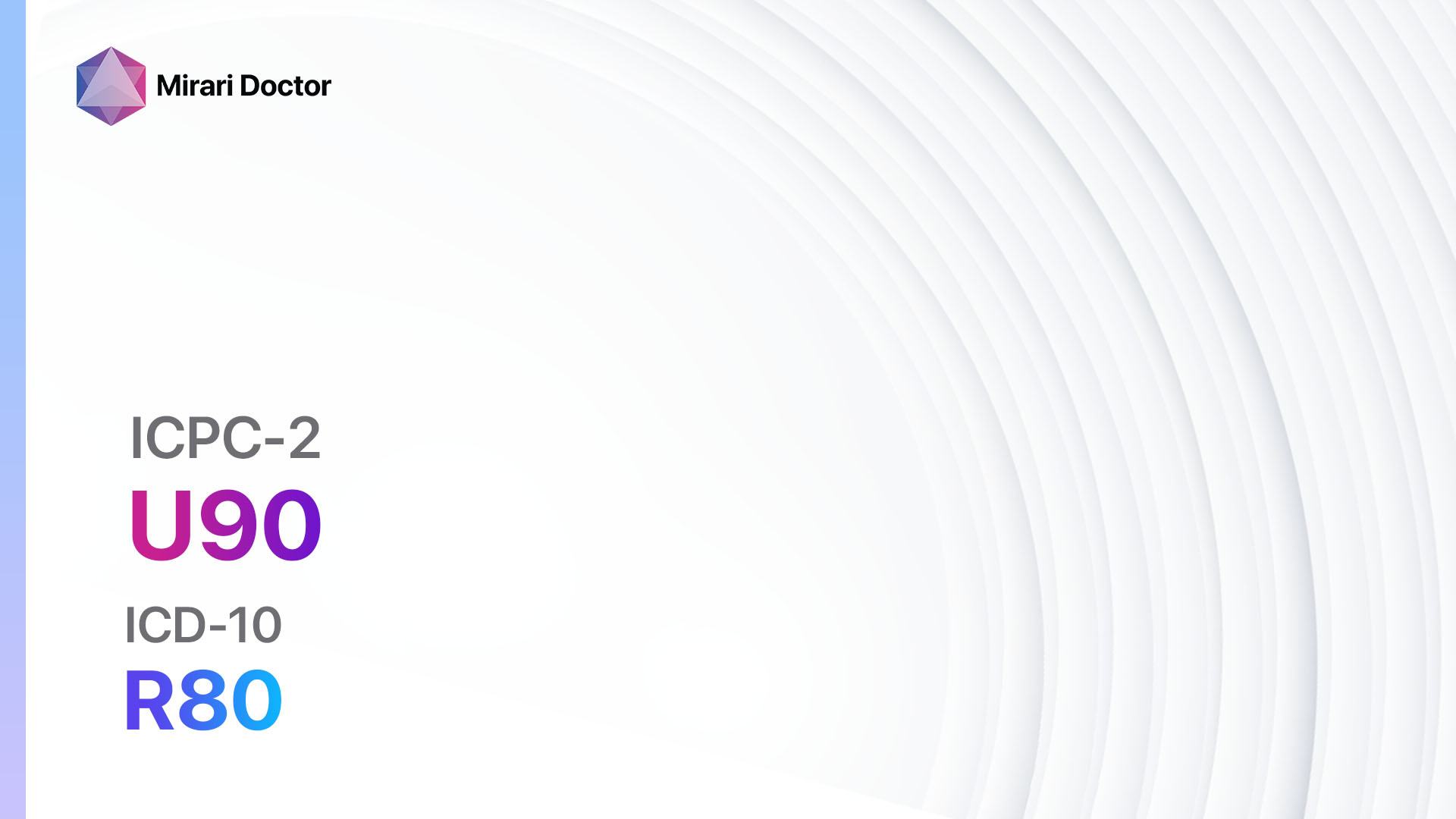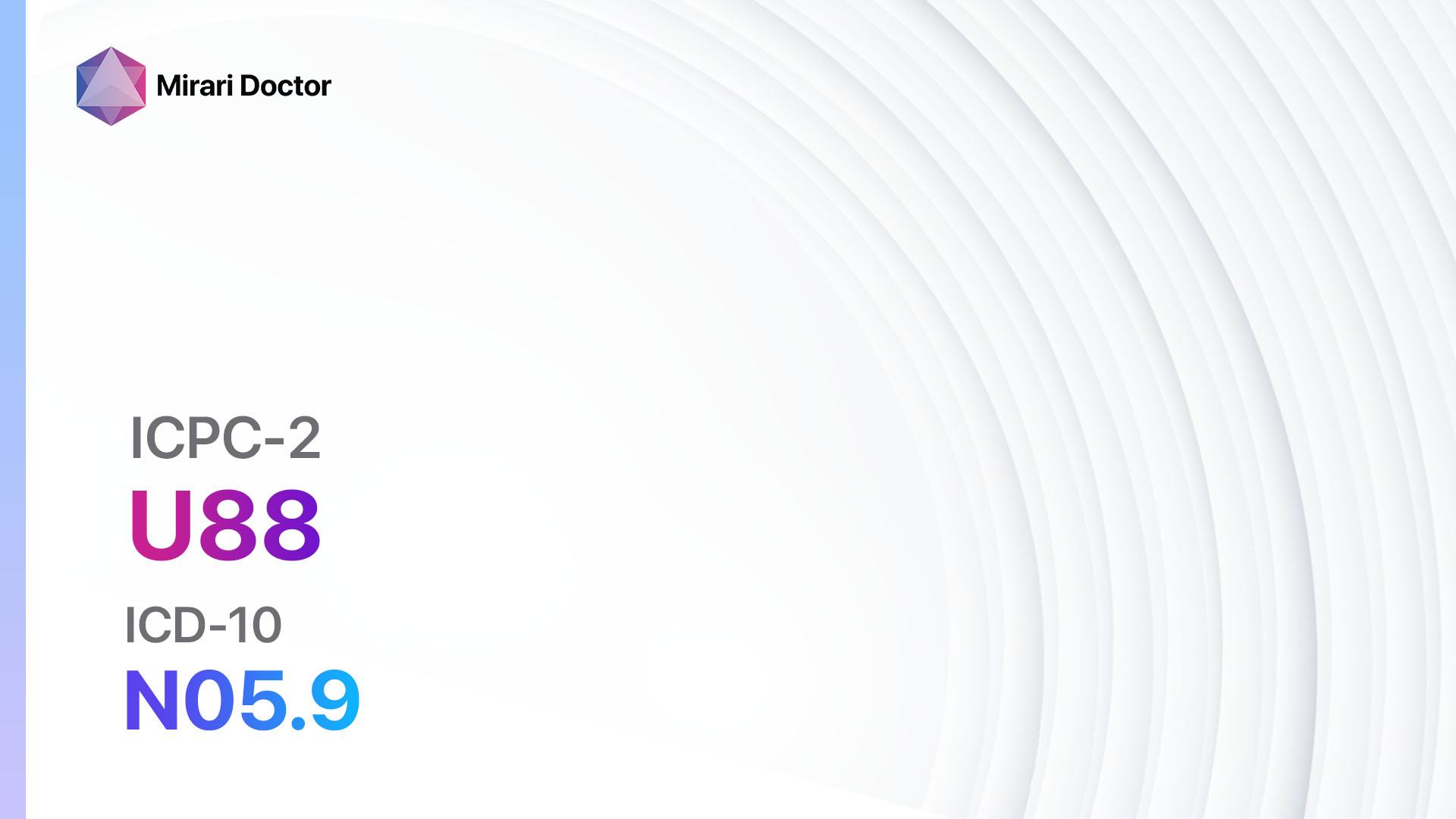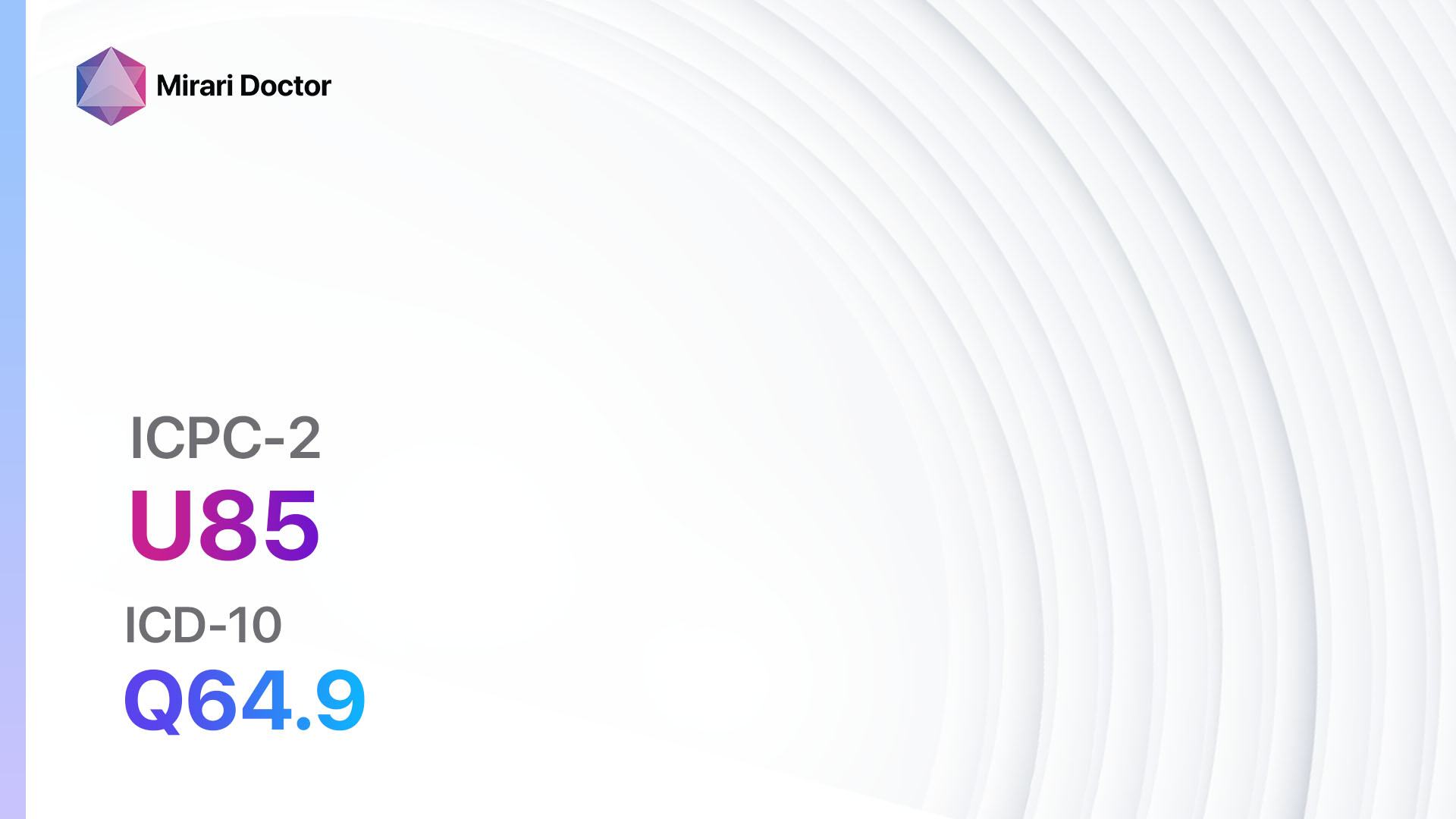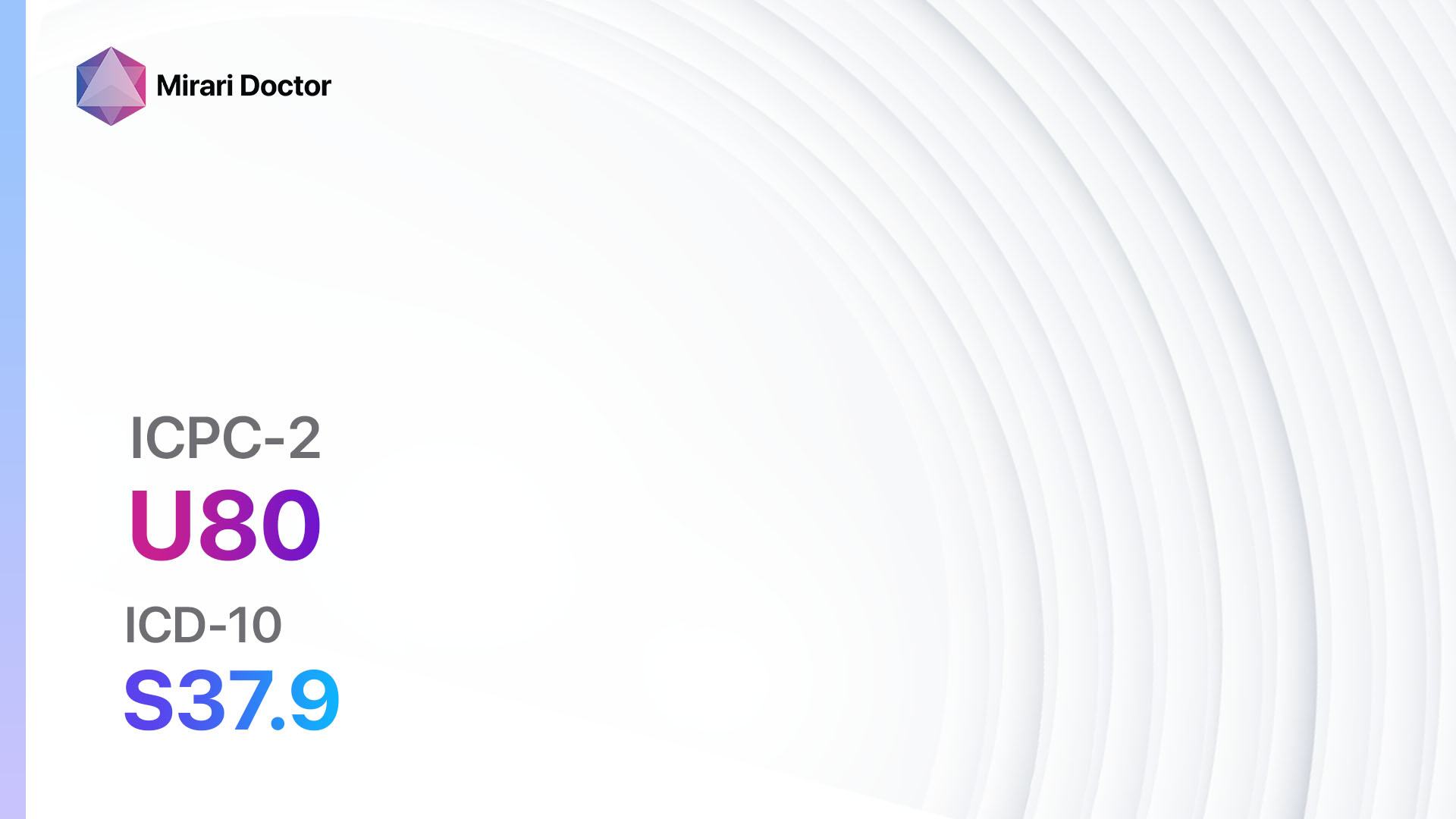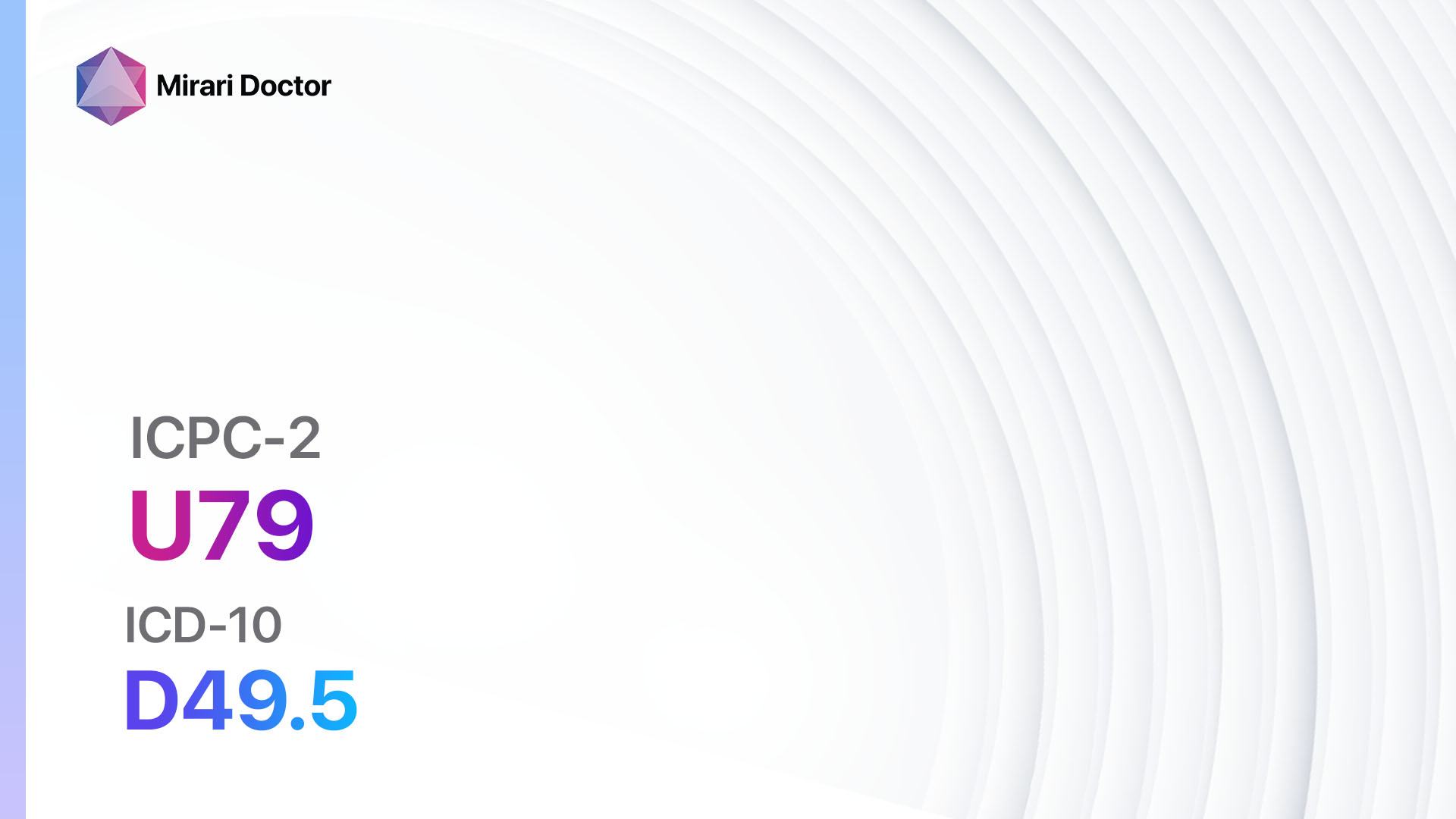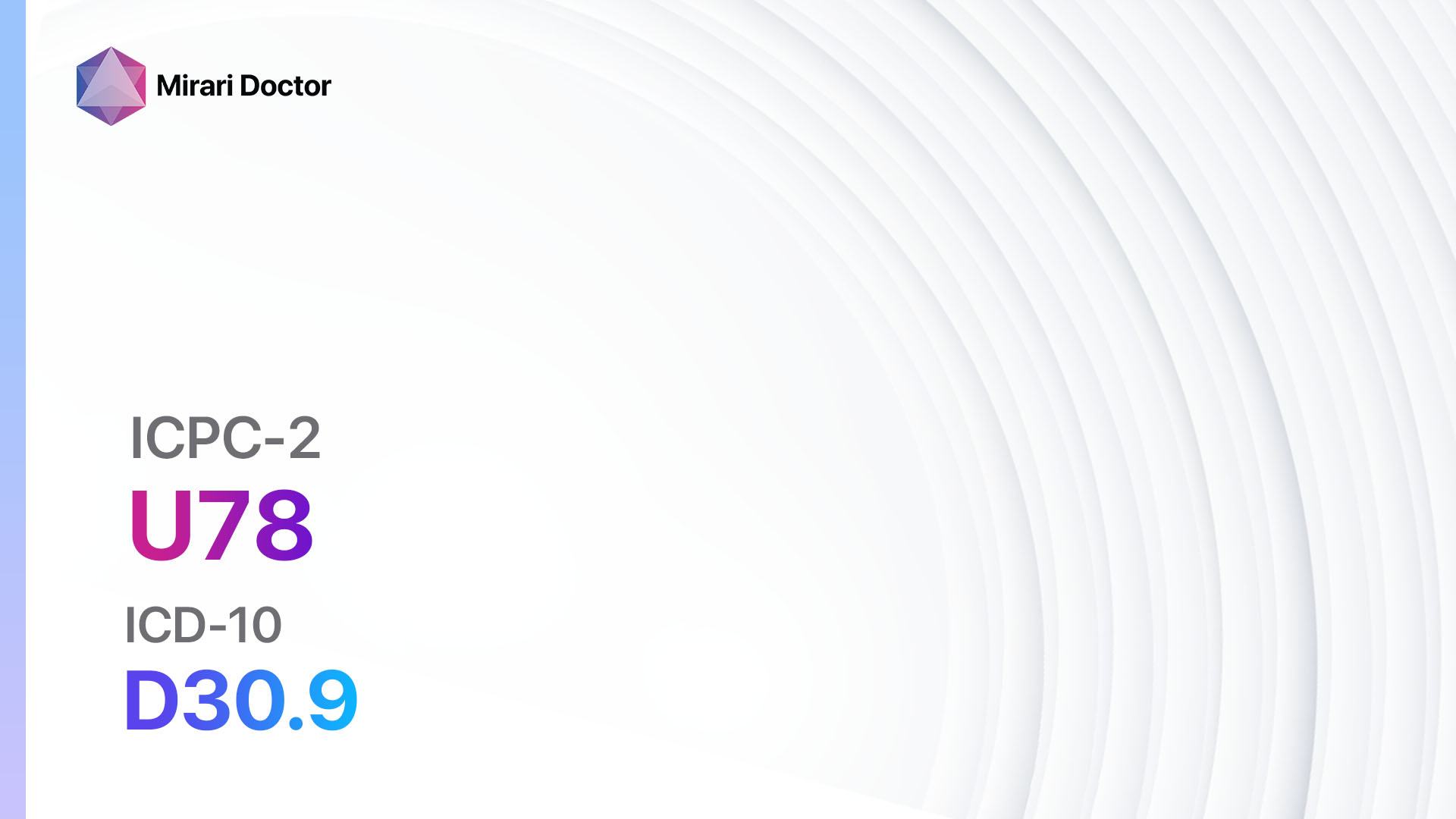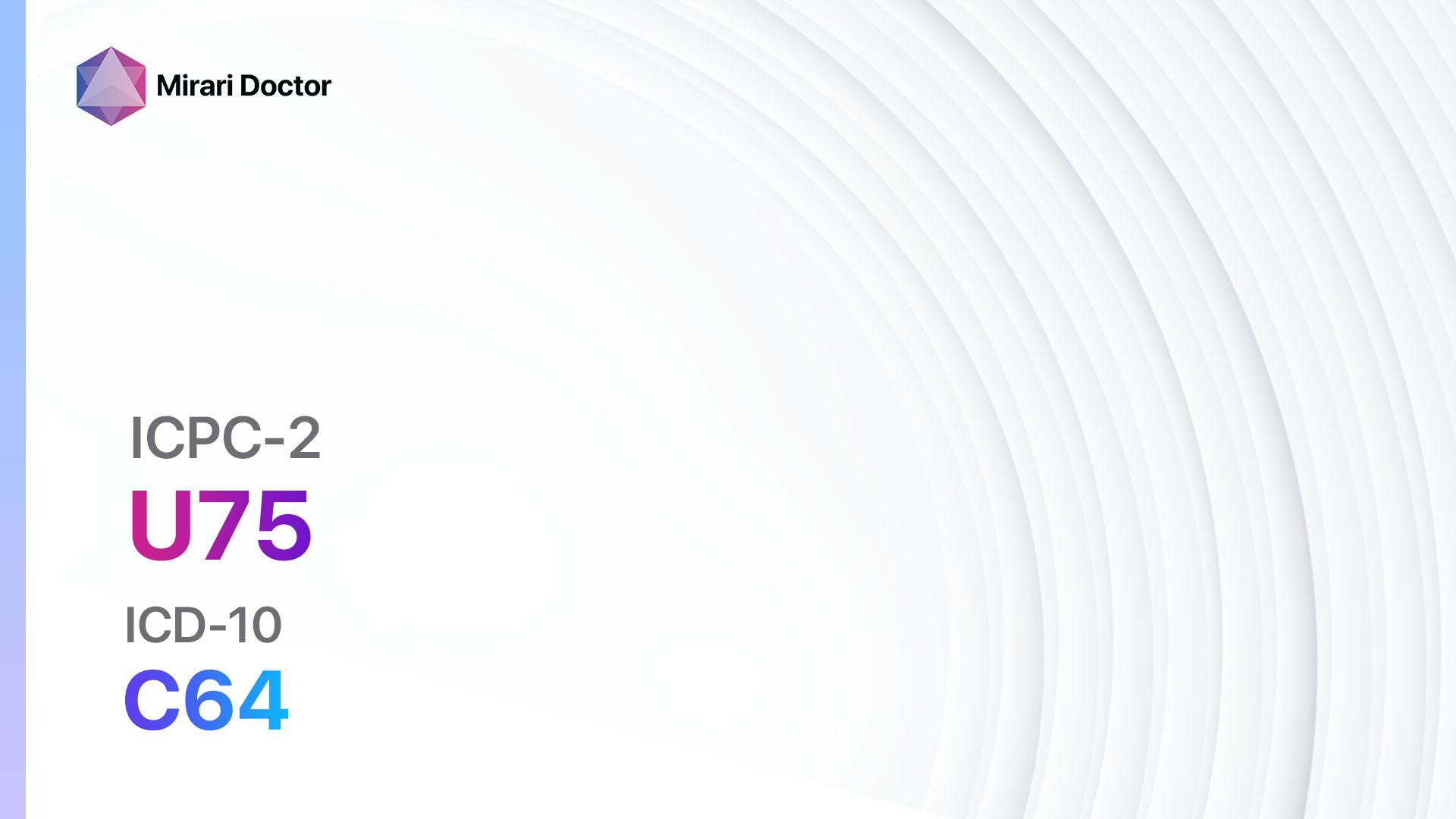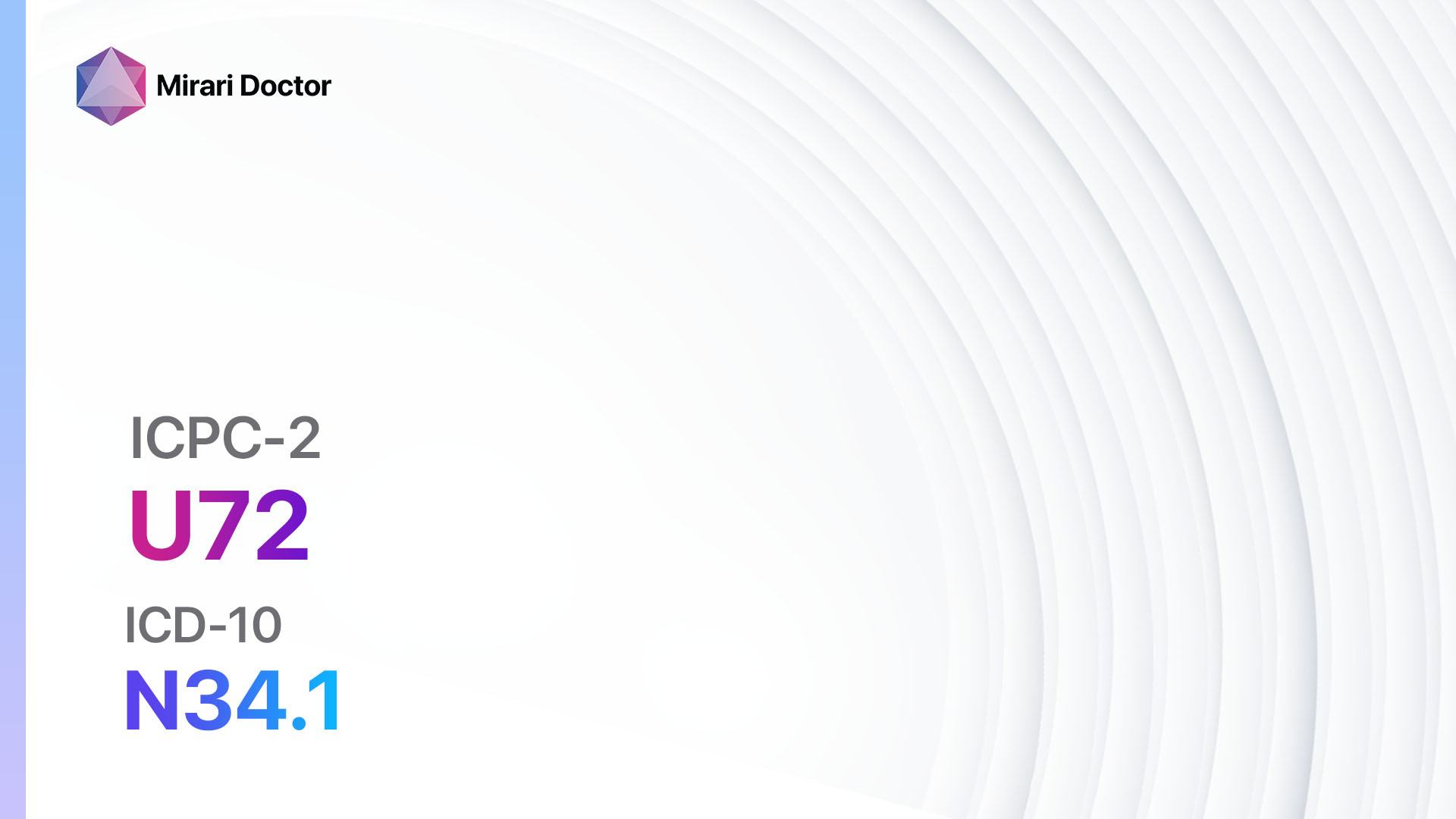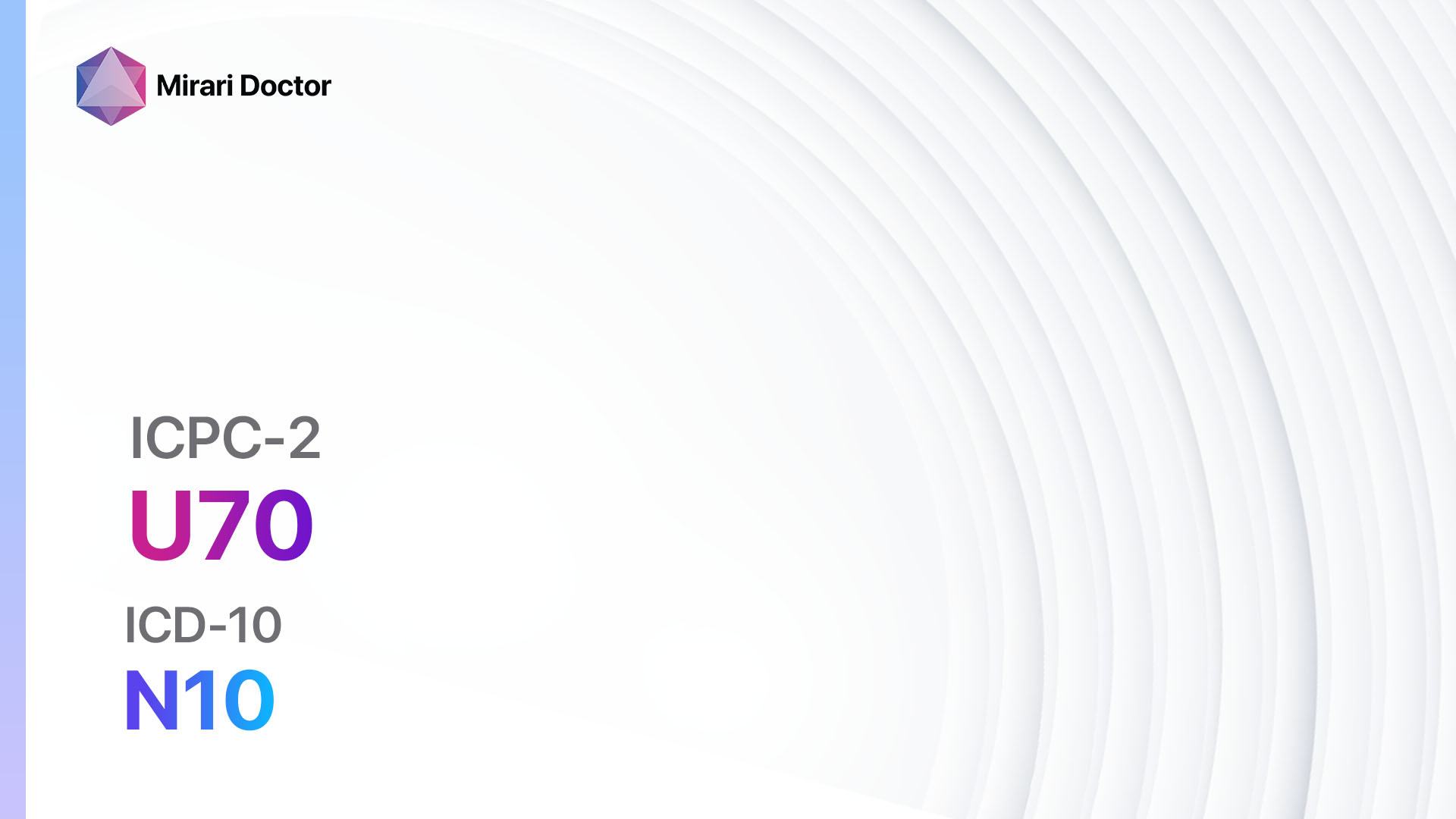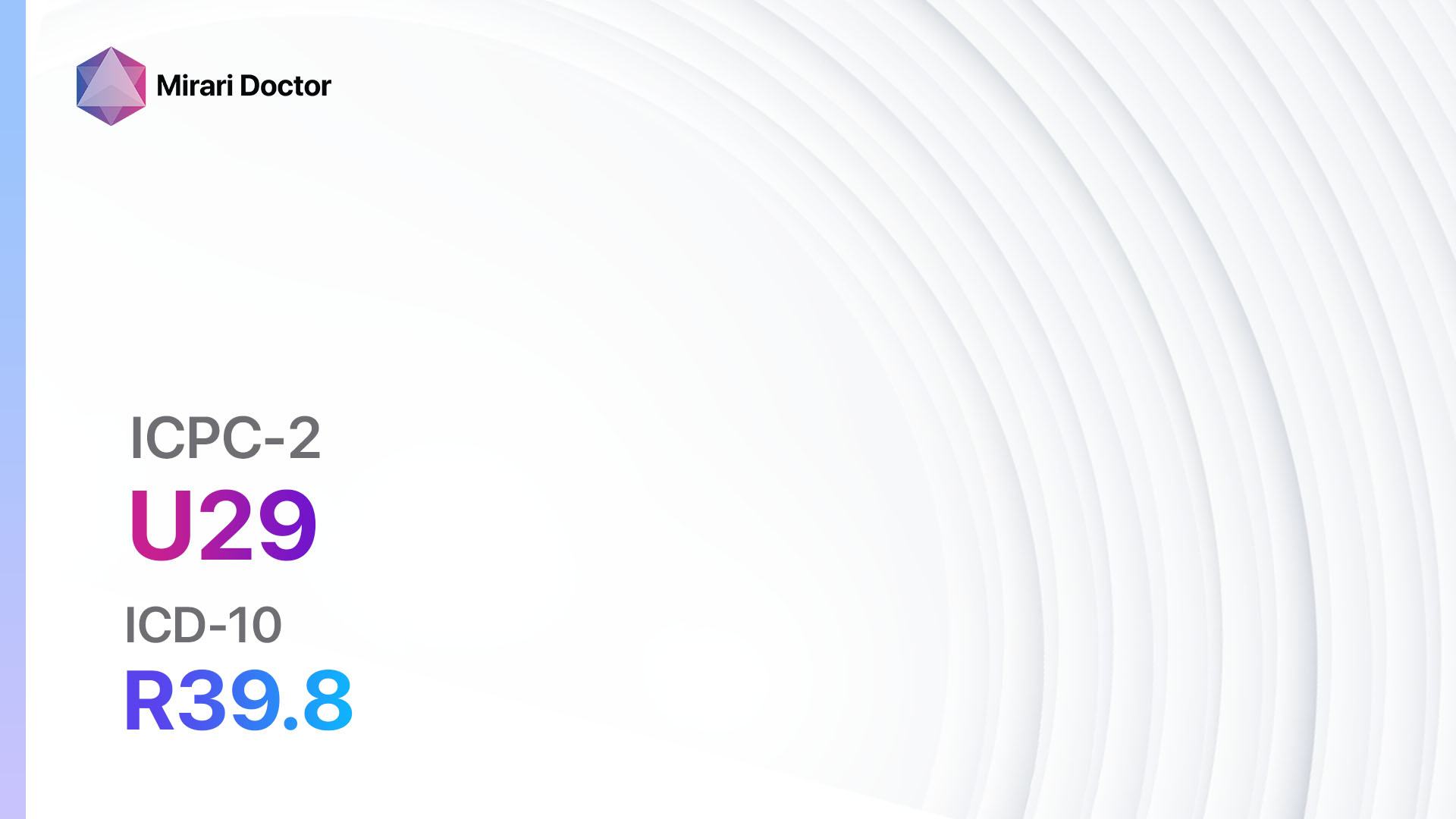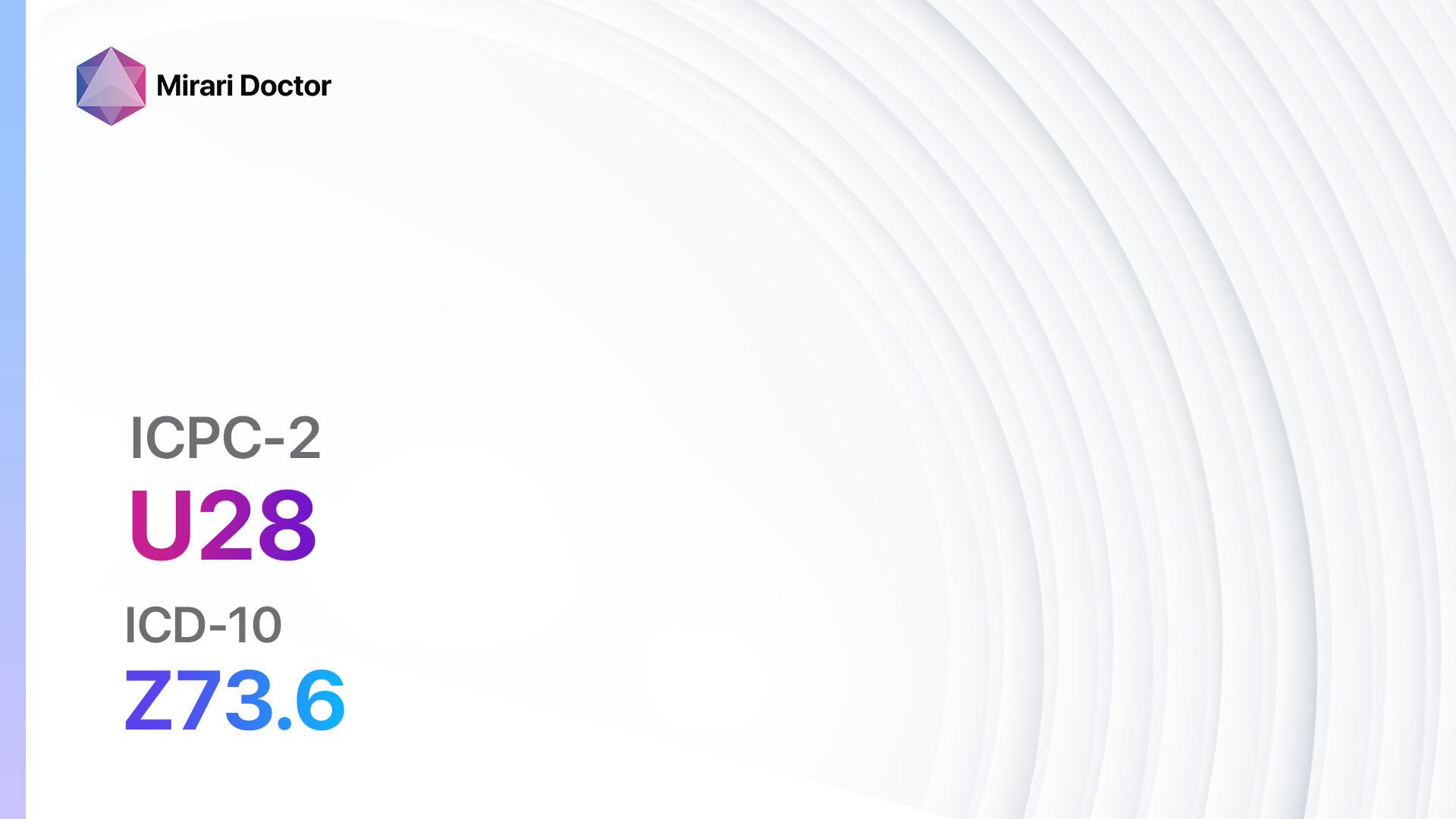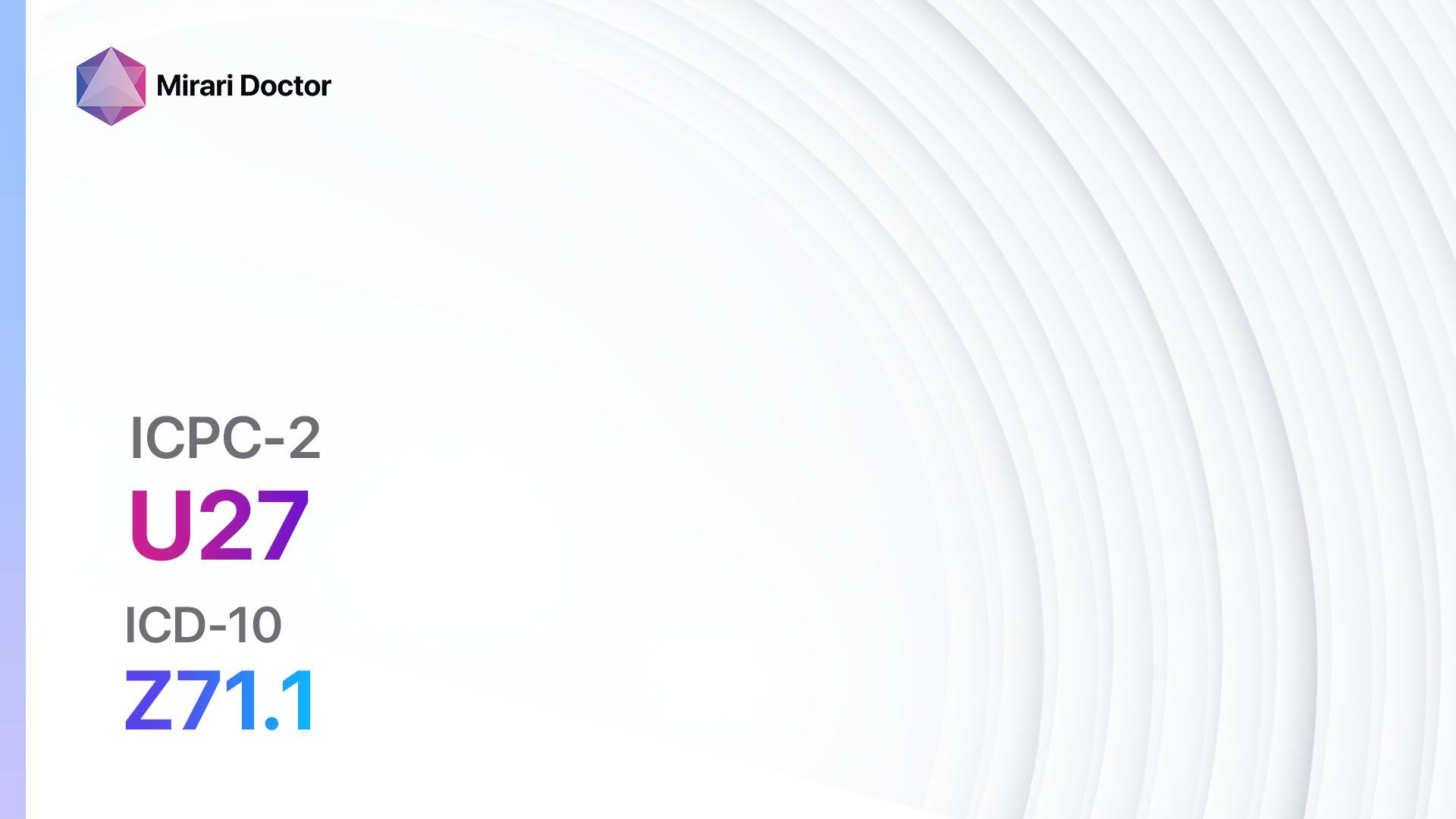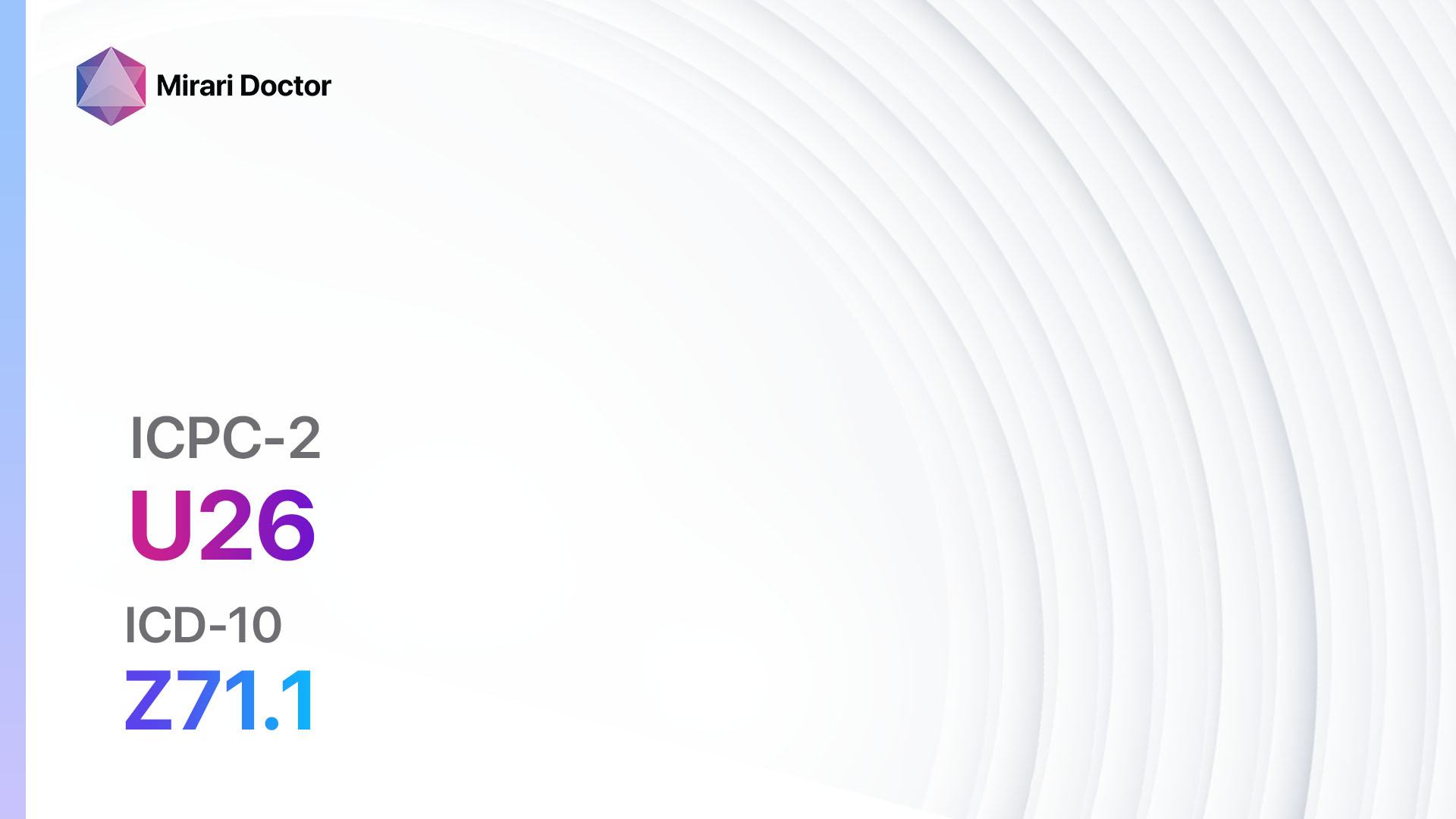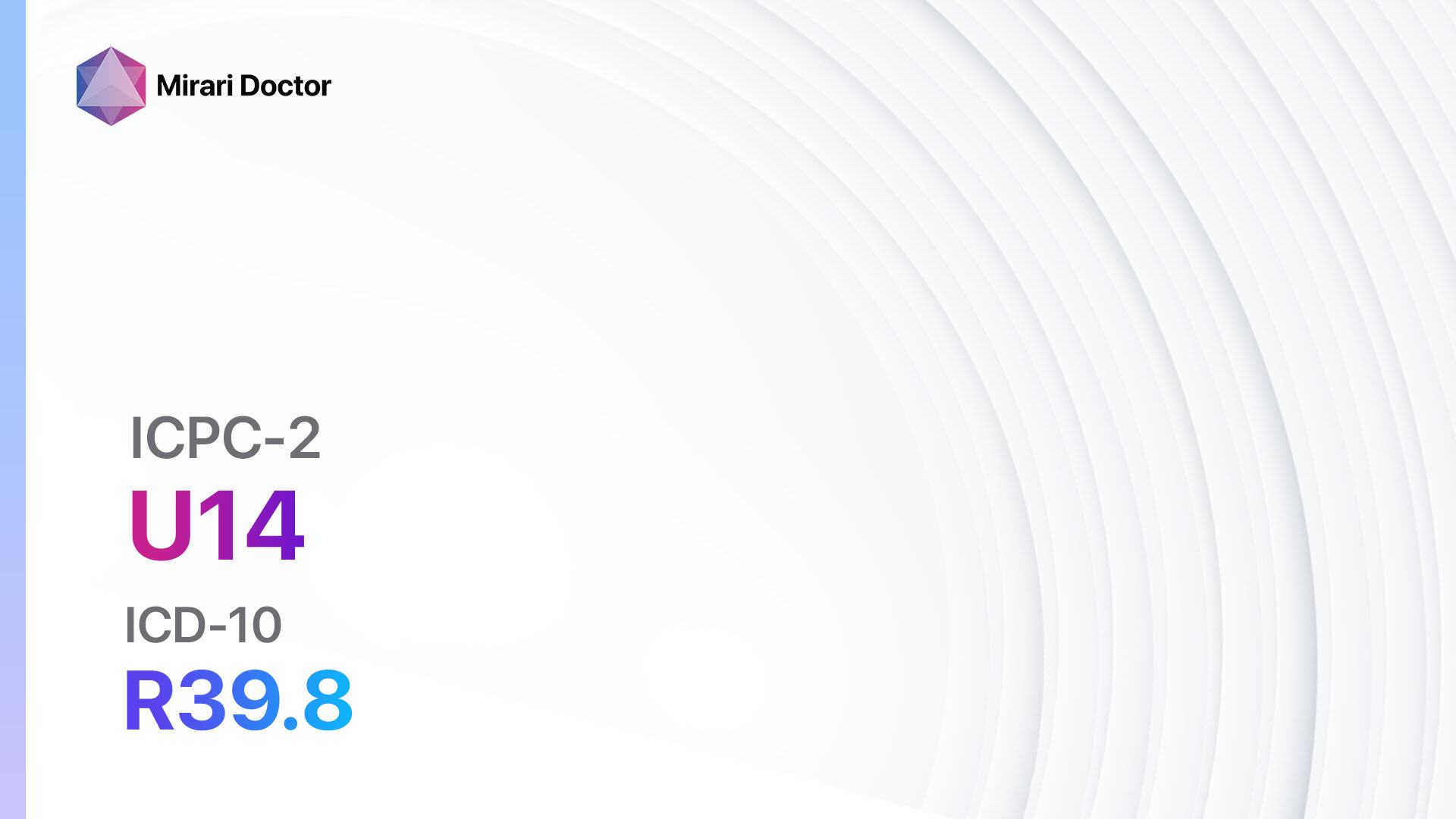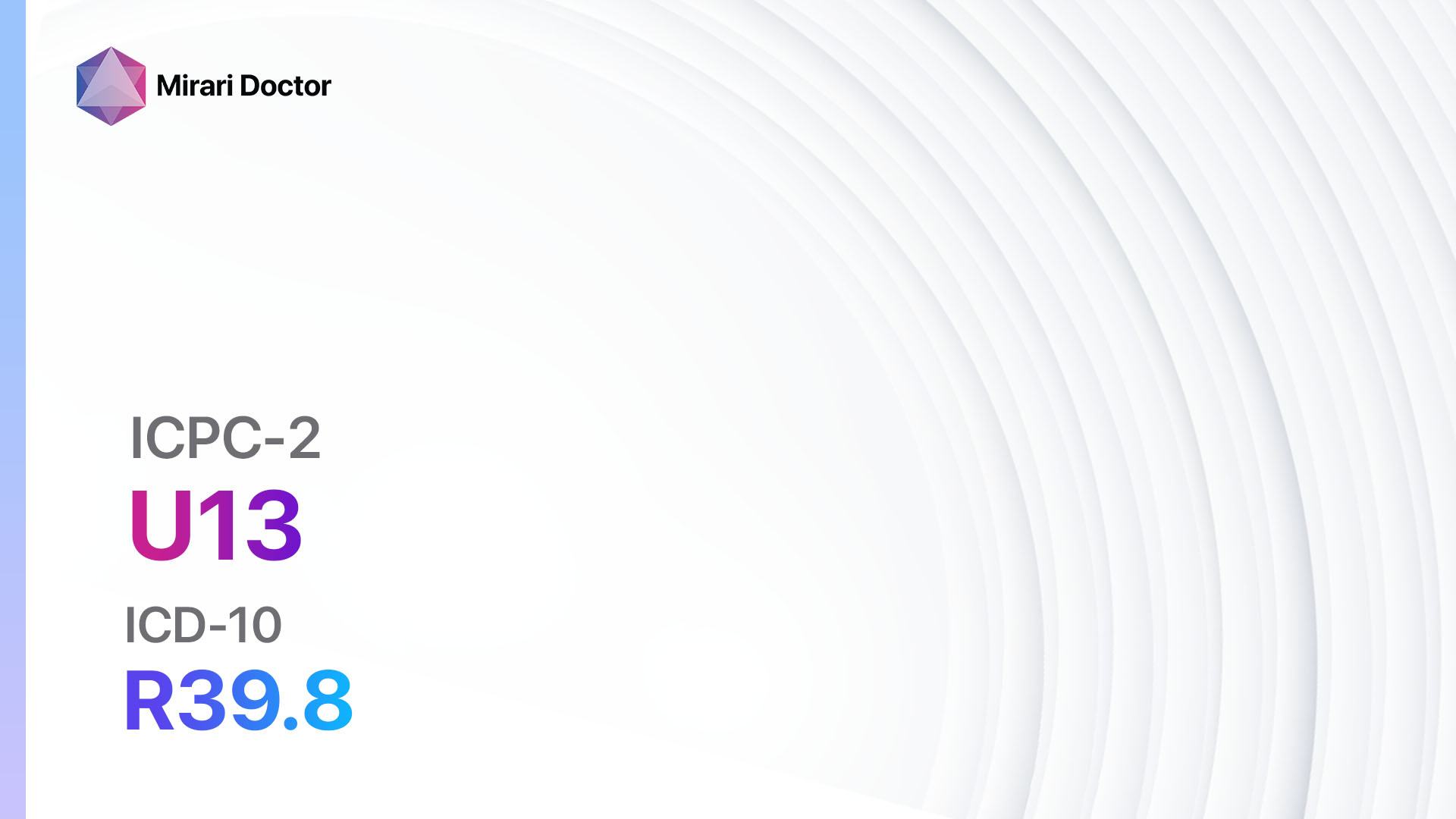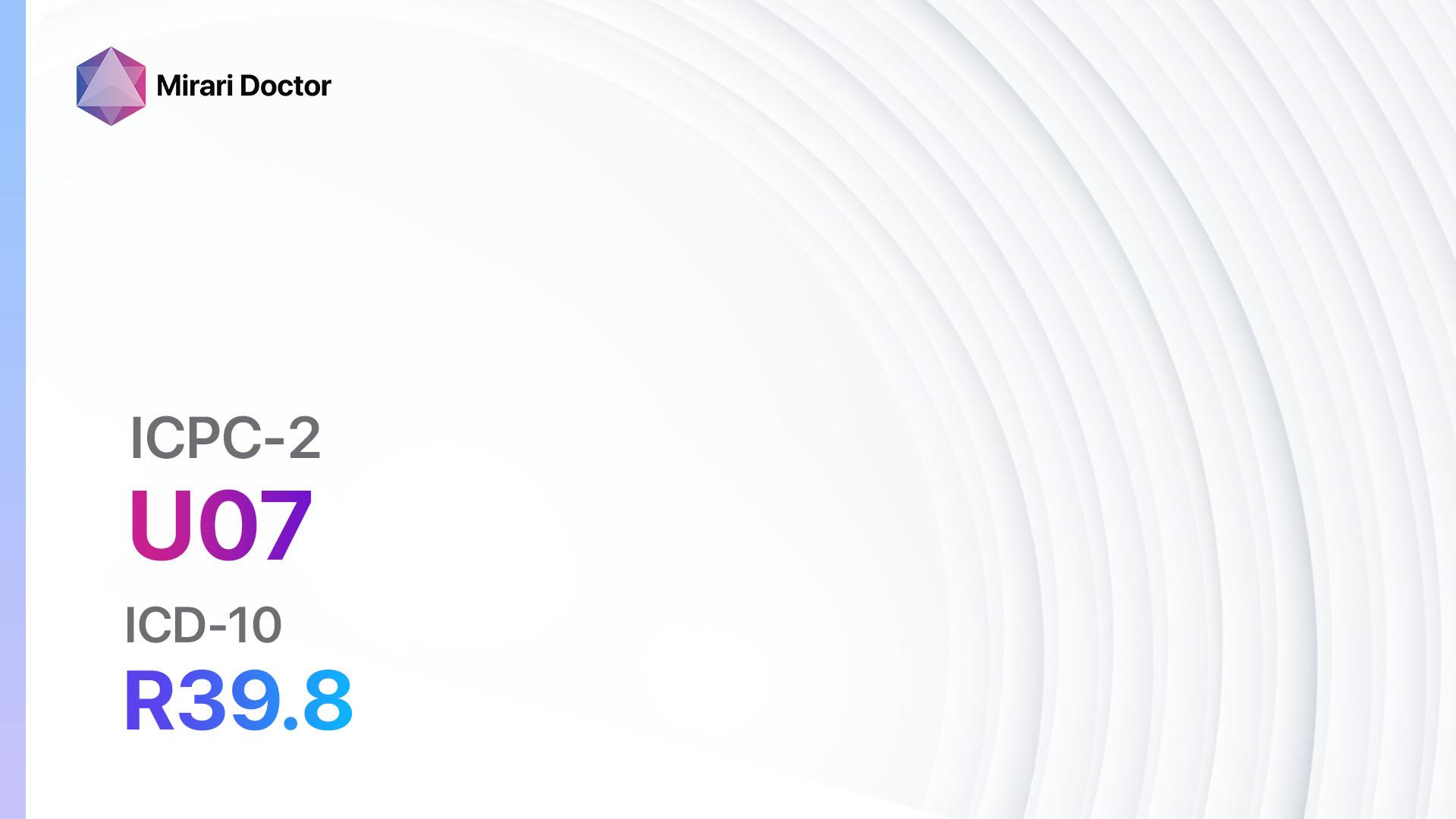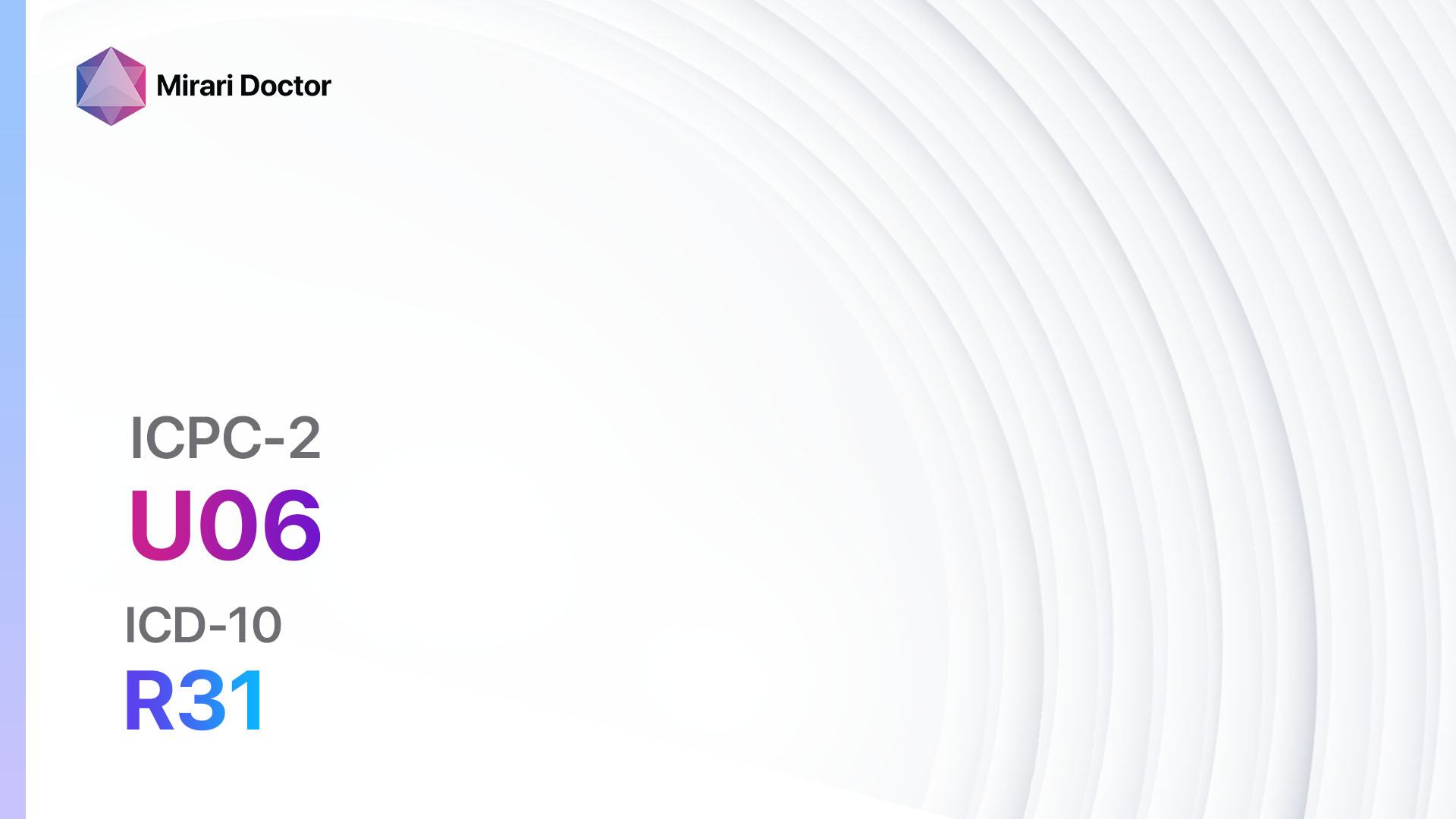
Introduction
Cystitis, also known as a urinary tract infection (UTI), is a common condition characterized by inflammation of the bladder. It is typically caused by bacteria entering the urethra and traveling up into the bladder[1]. This guide aims to provide healthcare professionals with a comprehensive approach to diagnosing and managing cystitis/urinary infection other.
Codes
Symptoms
- Dysuria: Pain or discomfort during urination
- Frequency: Increased need to urinate, often with small amounts of urine
- Urgency: Sudden and strong urge to urinate
- Hematuria: Blood in the urine
- Lower abdominal pain or pressure
- Cloudy or strong-smelling urine[2]
Causes
- Bacterial infection: Most commonly caused by Escherichia coli (E. coli) bacteria, which are normally found in the gastrointestinal tract but can enter the urethra and cause infection[3].
- Sexual activity: Sexual intercourse can introduce bacteria into the urethra, increasing the risk of infection.
- Use of certain contraceptives: Diaphragms and spermicides can increase the risk of urinary tract infections.
- Menopause: Decreased estrogen levels can lead to changes in the urinary tract, making it more susceptible to infection.
- Urinary tract abnormalities: Structural abnormalities or blockages in the urinary tract can increase the risk of infection[4].
Diagnostic Steps
Medical History
- Gather information about the patient’s symptoms, including the duration and severity.
- Ask about any previous urinary tract infections or other relevant medical conditions.
- Inquire about any recent sexual activity or contraceptive use.
- Assess for risk factors such as menopause or urinary tract abnormalities[5].
Physical Examination
- Perform a thorough physical examination, including a pelvic exam for female patients.
- Palpate the lower abdomen for tenderness or pain.
- Check for any signs of infection, such as fever or elevated heart rate.
- Inspect the external genitalia for any abnormalities or signs of inflammation[6].
Laboratory Tests
- Urinalysis: A urine sample is analyzed for the presence of bacteria, white blood cells, red blood cells, and other indicators of infection.
- Urine culture: If the urinalysis indicates the presence of bacteria, a urine culture is performed to identify the specific bacteria causing the infection and determine its susceptibility to antibiotics[7].
Diagnostic Imaging
- Generally, diagnostic imaging is not necessary for the diagnosis of cystitis/urinary infection other. However, in cases of recurrent or complicated infections, imaging studies such as ultrasound or CT scans may be performed to evaluate the urinary tract for any abnormalities or underlying causes[8].
Other Tests
- Cystoscopy: In some cases, a cystoscopy may be performed to visualize the inside of the bladder and urethra using a thin, flexible tube with a camera. This may be necessary if there are recurrent or persistent infections, or if there are other urinary tract abnormalities suspected[9].
Follow-up and Patient Education
- Provide the patient with information about the diagnosis and treatment plan.
- Advise the patient to complete the full course of antibiotics as prescribed.
- Encourage the patient to drink plenty of fluids to help flush out bacteria from the urinary tract.
- Educate the patient about strategies to prevent future urinary tract infections, such as proper hygiene, urinating before and after sexual activity, and avoiding irritants such as bubble baths or harsh soaps[10].
Possible Interventions
Traditional Interventions
Medications:
Top 5 drugs for Cystitis/Urinary Infection Other:
- Trimethoprim/sulfamethoxazole (Bactrim, Septra):
- Cost: $10-$50 for a 10-day course.
- Contraindications: Hypersensitivity to sulfa drugs, pregnancy (especially in the first trimester), breastfeeding infants.
- Side effects: Nausea, vomiting, rash, allergic reactions.
- Severe side effects: Stevens-Johnson syndrome, toxic epidermal necrolysis.
- Drug interactions: Warfarin, phenytoin, methotrexate.
- Warning: Monitor for signs of allergic reactions or severe skin reactions.
- Nitrofurantoin (Macrobid, Macrodantin):
- Cost: $10-$50 for a 7-day course.
- Contraindications: Severe renal impairment, infants younger than 1 month.
- Side effects: Nausea, vomiting, diarrhea, pulmonary toxicity.
- Severe side effects: Acute pulmonary hypersensitivity, hepatotoxicity.
- Drug interactions: Antacids containing magnesium trisilicate, probenecid.
- Warning: Monitor for signs of pulmonary toxicity or hepatotoxicity.
- Ciprofloxacin (Cipro):
- Cost: $10-$50 for a 7-day course.
- Contraindications: Hypersensitivity to fluoroquinolones, pregnancy, breastfeeding infants.
- Side effects: Nausea, diarrhea, headache, dizziness.
- Severe side effects: Tendinitis, tendon rupture, peripheral neuropathy.
- Drug interactions: Warfarin, theophylline, tizanidine.
- Warning: Monitor for signs of tendonitis or peripheral neuropathy.
- Amoxicillin/clavulanate (Augmentin):
- Cost: $10-$50 for a 7-day course.
- Contraindications: Hypersensitivity to penicillins, history of cholestatic jaundice or hepatic dysfunction.
- Side effects: Diarrhea, nausea, rash, allergic reactions.
- Severe side effects: Severe allergic reactions, pseudomembranous colitis.
- Drug interactions: Methotrexate, probenecid, allopurinol.
- Warning: Monitor for signs of severe allergic reactions or pseudomembranous colitis.
- Fosfomycin (Monurol):
- Cost: $30-$50 for a single dose.
- Contraindications: Hypersensitivity to fosfomycin, severe renal impairment.
- Side effects: Diarrhea, headache, nausea, vaginitis.
- Severe side effects: Anaphylaxis, Clostridium difficile-associated diarrhea.
- Drug interactions: None reported.
- Warning: Monitor for signs of severe allergic reactions or Clostridium difficile-associated diarrhea.
Alternative Drugs:
- Pivmecillinam (Selexid): An alternative to trimethoprim/sulfamethoxazole or nitrofurantoin.
- Cefpodoxime (Vantin): An alternative to trimethoprim/sulfamethoxazole or nitrofurantoin.
- Levofloxacin (Levaquin): An alternative to ciprofloxacin.
- Ceftriaxone (Rocephin): An alternative for severe or complicated infections.
- Gentamicin (Garamycin): An alternative for severe or complicated infections.
Surgical Procedures:
- Generally, surgical procedures are not necessary for the treatment of cystitis/urinary infection other. However, in cases of recurrent or complicated infections, referral to a urologist may be necessary to evaluate and address any underlying urinary tract abnormalities.
Alternative Interventions
- Probiotics: Certain strains of probiotics, such as Lactobacillus, may help restore the natural balance of bacteria in the urinary tract. Cost: $10-$30 per month.
- Cranberry products: Cranberry juice or supplements may help prevent bacterial adherence to the urinary tract. Cost: $10-$20 per month.
- D-mannose: A sugar that may help prevent bacteria from adhering to the urinary tract. Cost: $20-$40 per month.
- Herbal supplements: Some herbs, such as uva ursi or goldenseal, may have antimicrobial properties. Cost: Varies depending on the specific supplement.
- Acupuncture: May help alleviate symptoms and promote overall well-being. Cost: $60-$120 per session.
Lifestyle Interventions
- Hydration: Encourage the patient to drink plenty of fluids to help flush out bacteria from the urinary tract. Cost: Varies depending on the availability of clean drinking water.
- Urinary hygiene: Advise the patient to practice good urinary hygiene, including wiping from front to back after urination, urinating before and after sexual activity, and avoiding irritants such as bubble baths or harsh soaps. Cost: Varies depending on the cost of personal hygiene products.
- Avoiding bladder irritants: Educate the patient about avoiding bladder irritants such as caffeine, alcohol, and spicy foods. Cost: Varies depending on the patient’s dietary choices.
- Stress management: Stress can weaken the immune system and increase the risk of infection. Encourage the patient to engage in stress-reducing activities such as exercise, meditation, or counseling. Cost: Varies depending on the chosen stress management techniques.
It is important to note that the cost ranges provided are approximate and may vary depending on the location and availability of the interventions.
Mirari Cold Plasma Alternative Intervention
Understanding Mirari Cold Plasma
- Safe and Non-Invasive Treatment: Mirari Cold Plasma is a safe and non-invasive treatment option for various skin conditions. It does not require incisions, minimizing the risk of scarring, bleeding, or tissue damage.
- Efficient Extraction of Foreign Bodies: Mirari Cold Plasma facilitates the removal of foreign bodies from the skin by degrading and dissociating organic matter, allowing easier access and extraction.
- Pain Reduction and Comfort: Mirari Cold Plasma has a local analgesic effect, providing pain relief during the treatment, making it more comfortable for the patient.
- Reduced Risk of Infection: Mirari Cold Plasma has antimicrobial properties, effectively killing bacteria and reducing the risk of infection.
- Accelerated Healing and Minimal Scarring: Mirari Cold Plasma stimulates wound healing and tissue regeneration, reducing healing time and minimizing the formation of scars.
Mirari Cold Plasma Prescription
Video instructions for using Mirari Cold Plasma Device – U71 Cystitis/urinary infection other (ICD-10:N30.9)
| Mild | Moderate | Severe |
| Mode setting: 1 (Infection) Location: 2 (Prostate & Uterus) Morning: 15 minutes, Evening: 15 minutes |
Mode setting: 1 (Infection) Location: 2 (Prostate & Uterus) Morning: 30 minutes, Lunch: 30 minutes, Evening: 30 minutes |
Mode setting: 1 (Infection) Location: 2 (Prostate & Uterus) Morning: 30 minutes, Lunch: 30 minutes, Evening: 30 minutes |
| Mode setting: 6 (Liver/Kidney Therapy) Location: 2 (Prostate & Uterus) Morning: 15 minutes, Evening: 15 minutes |
Mode setting: 6 (Liver/Kidney Therapy) Location: 2 (Prostate & Uterus) Morning: 30 minutes, Lunch: 30 minutes, Evening: 30 minutes |
Mode setting: 6 (Liver/Kidney Therapy) Location: 2 (Prostate & Uterus) Morning: 30 minutes, Lunch: 30 minutes, Evening: 30 minutes |
| Mode setting: 7 (Immunotherapy) Location: 1 (Sacrum) Morning: 15 minutes, Evening: 15 minutes |
Mode setting:7 (Immunotherapy) Location: 1 (Sacrum) Morning: 30 minutes, Lunch: 30 minutes, Evening: 30 minutes |
Mode setting:7 (Immunotherapy) Location: 1 (Sacrum) Morning: 30 minutes, Lunch: 30 minutes, Evening: 30 minutes |
| Mode setting: 7 (Immunotherapy) Location: 1 (Sacrum) Morning: 15 minutes, Evening: 15 minutes |
Mode setting:7 (Immunotherapy) Location: 1 (Sacrum) Morning: 30 minutes, Lunch: 30 minutes, Evening: 30 minutes |
Mode setting:7 (Immunotherapy) Location: 1 (Sacrum) Morning: 30 minutes, Lunch: 30 minutes, Evening: 30 minutes |
| Total Morning: 60 minutes approx. $10 USD, Evening: 60 minutes approx. $10 USD |
Total Morning: 120 minutes approx. $20 USD, Lunch: 120 minutes approx. $20 USD, Evening: 120 minutes approx. $20 USD, |
Total Morning: 120 minutes approx. $20 USD, Lunch: 120 minutes approx. $20 USD, Evening: 120 minutes approx. $20 USD, |
| Usual treatment for 7-60 days approx. $140 USD – $1200 USD | Usual treatment for 6-8 weeks approx. $2,520 USD – $3,360 USD |
Usual treatment for 3-6 months approx. $5,400 USD – $10,800 USD
|
 |
|
Use the Mirari Cold Plasma device to treat Cystitis/urinary infection other effectively.
WARNING: MIRARI COLD PLASMA IS DESIGNED FOR THE HUMAN BODY WITHOUT ANY ARTIFICIAL OR THIRD PARTY PRODUCTS. USE OF OTHER PRODUCTS IN COMBINATION WITH MIRARI COLD PLASMA MAY CAUSE UNPREDICTABLE EFFECTS, HARM OR INJURY. PLEASE CONSULT A MEDICAL PROFESSIONAL BEFORE COMBINING ANY OTHER PRODUCTS WITH USE OF MIRARI.
Step 1: Cleanse the Skin
- Start by cleaning the affected area of the skin with a gentle cleanser or mild soap and water. Gently pat the area dry with a clean towel.
Step 2: Prepare the Mirari Cold Plasma device
- Ensure that the Mirari Cold Plasma device is fully charged or has fresh batteries as per the manufacturer’s instructions. Make sure the device is clean and in good working condition.
- Switch on the Mirari device using the power button or by following the specific instructions provided with the device.
- Some Mirari devices may have adjustable settings for intensity or treatment duration. Follow the manufacturer’s instructions to select the appropriate settings based on your needs and the recommended guidelines.
Step 3: Apply the Device
- Place the Mirari device in direct contact with the affected area of the skin. Gently glide or hold the device over the skin surface, ensuring even coverage of the area experiencing.
- Slowly move the Mirari device in a circular motion or follow a specific pattern as indicated in the user manual. This helps ensure thorough treatment coverage.
Step 4: Monitor and Assess:
- Keep track of your progress and evaluate the effectiveness of the Mirari device in managing your Cystitis/urinary infection other. If you have any concerns or notice any adverse reactions, consult with your health care professional.
Note
This guide is for informational purposes only and should not replace the advice of a medical professional. Always consult with your healthcare provider or a qualified medical professional for personal advice, diagnosis, or treatment. Do not solely rely on the information presented here for decisions about your health. Use of this information is at your own risk. The authors of this guide, nor any associated entities or platforms, are not responsible for any potential adverse effects or outcomes based on the content.
Mirari Cold Plasma System Disclaimer
- Purpose: The Mirari Cold Plasma System is a Class 2 medical device designed for use by trained healthcare professionals. It is registered for use in Thailand and Vietnam. It is not intended for use outside of these locations.
- Informational Use: The content and information provided with the device are for educational and informational purposes only. They are not a substitute for professional medical advice or care.
- Variable Outcomes: While the device is approved for specific uses, individual outcomes can differ. We do not assert or guarantee specific medical outcomes.
- Consultation: Prior to utilizing the device or making decisions based on its content, it is essential to consult with a Certified Mirari Tele-Therapist and your medical healthcare provider regarding specific protocols.
- Liability: By using this device, users are acknowledging and accepting all potential risks. Neither the manufacturer nor the distributor will be held accountable for any adverse reactions, injuries, or damages stemming from its use.
- Geographical Availability: This device has received approval for designated purposes by the Thai and Vietnam FDA. As of now, outside of Thailand and Vietnam, the Mirari Cold Plasma System is not available for purchase or use.
References
- Flores-Mireles, A. L., Walker, J. N., Caparon, M., & Hultgren, S. J. (2015). Urinary tract infections: epidemiology, mechanisms of infection and treatment options. Nature Reviews Microbiology, 13(5), 269-284.
- Michels, T. C., & Sands, J. E. (2015). Dysuria: Evaluation and Differential Diagnosis in Adults. American Family Physician, 92(9), 778-786.
- Foxman, B. (2010). The epidemiology of urinary tract infection. Nature Reviews Urology, 7(12), 653-660.
- Nicolle, L. E. (2014). Catheter associated urinary tract infections. Antimicrobial Resistance and Infection Control, 3(1), 23.
- Gupta, K., Hooton, T. M., Naber, K. G., Wullt, B., Colgan, R., Miller, L. G., … & Soper, D. E. (2011). International clinical practice guidelines for the treatment of acute uncomplicated cystitis and pyelonephritis in women: a 2010 update by the Infectious Diseases Society of America and the European Society for Microbiology and Infectious Diseases. Clinical Infectious Diseases, 52(5), e103-e120.
- Ramakrishnan, K., & Scheid, D. C. (2005). Diagnosis and management of acute pyelonephritis in adults. American Family Physician, 71(5), 933-942.
- Wilson, M. L., & Gaido, L. (2004). Laboratory diagnosis of urinary tract infections in adult patients. Clinical Infectious Diseases, 38(8), 1150-1158.
- Craig, W. D., Wagner, B. J., & Travis, M. D. (2008). Pyelonephritis: radiologic-pathologic review. Radiographics, 28(1), 255-277.
- Dmochowski, R. R. (2005). Bladder outlet obstruction: etiology and evaluation. Reviews in Urology, 7(Suppl 6), S3.
- Hooton, T. M. (2012). Uncomplicated urinary tract infection. New England Journal of Medicine, 366(11), 1028-1037.
Related articles
Made in USA


